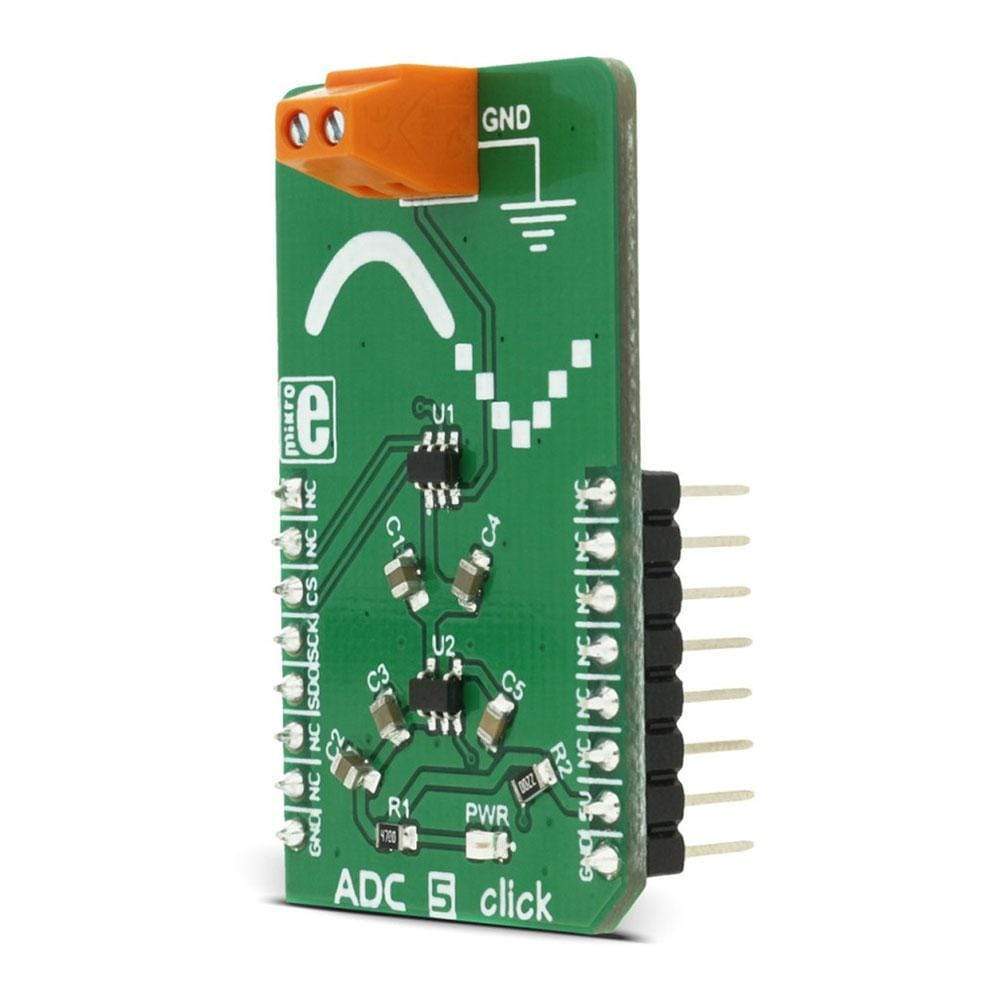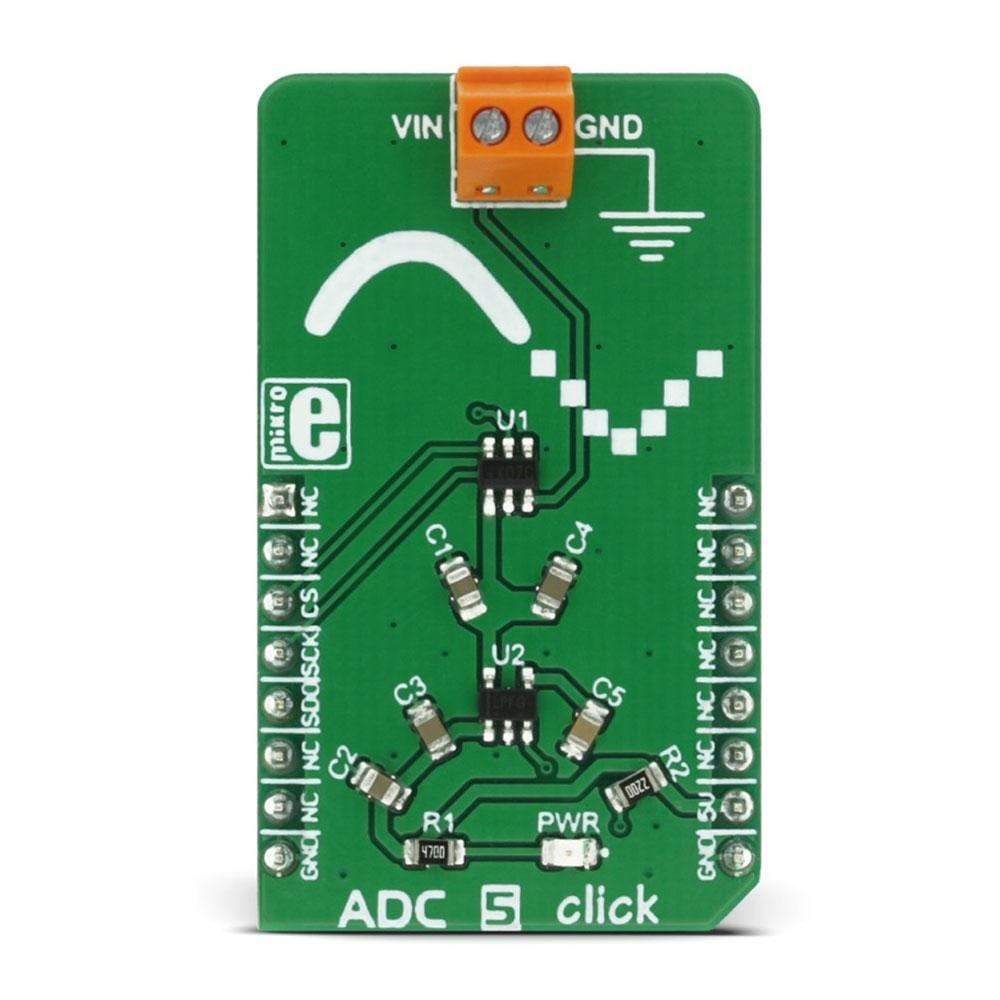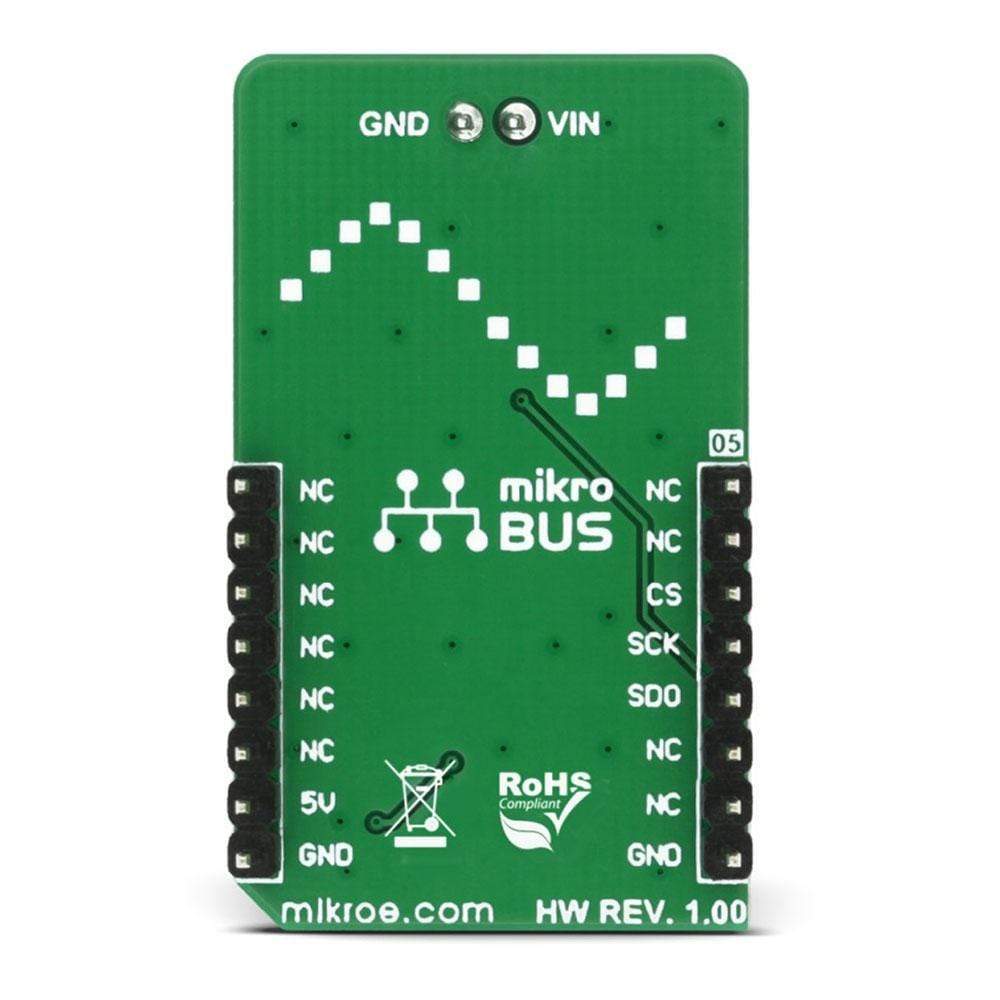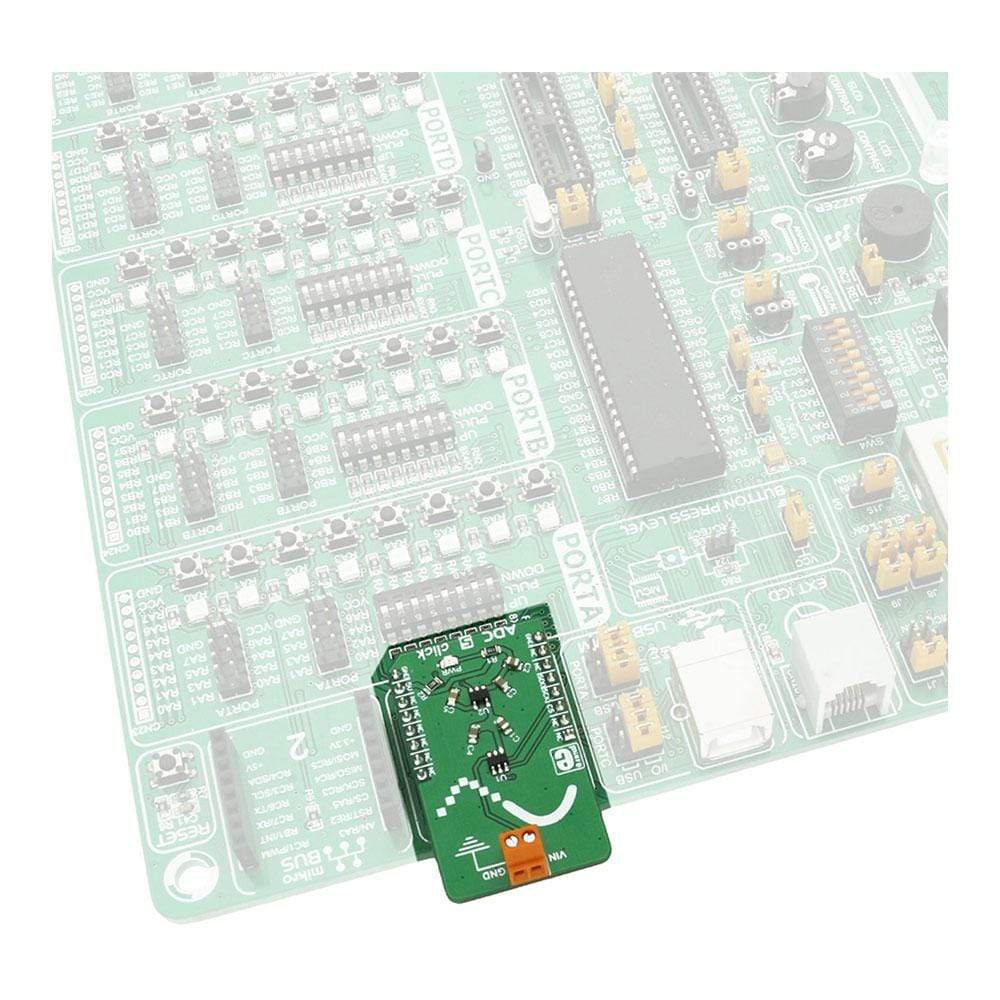



Key Features
Overview
The ADC 5 Click Board™ is a device used to sample an analogue voltage on the input and convert it to digital information. In general, ADC (analogue to digital converters) are the most commonly used devices for converting the voltage signals into information, which can be then processed in the digital domain. There are many types of ADC converters commercially available. They can vary in bit depth, sample rate, used approximation algorithm (SAR, delta-sigma..) and so on. Those attributes affect how accurately the sampled voltage will be translated into the digital world.
Downloads
L' ADC 5 Click Board™ est un dispositif utilisé pour échantillonner une tension analogique sur l'entrée et la convertir en informations numériques. En général, les ADC (convertisseurs analogiques-numériques) sont les dispositifs les plus couramment utilisés pour convertir les signaux de tension en informations, qui peuvent ensuite être traitées dans le domaine numérique. Il existe de nombreux types de convertisseurs ADC disponibles dans le commerce. Ils peuvent varier en termes de profondeur de bits, de fréquence d'échantillonnage, d'algorithme d'approximation utilisé (SAR, delta-sigma...) etc. Ces attributs affectent la précision avec laquelle la tension échantillonnée sera traduite dans le monde numérique.
| General Information | |
|---|---|
Part Number (SKU) |
MIKROE-2846
|
Manufacturer |
|
| Physical and Mechanical | |
Weight |
0.019 kg
|
| Other | |
Country of Origin |
|
HS Code Customs Tariff code
|
|
EAN |
8606018712083
|
Warranty |
|
Frequently Asked Questions
Have a Question?
Be the first to ask a question about this.




